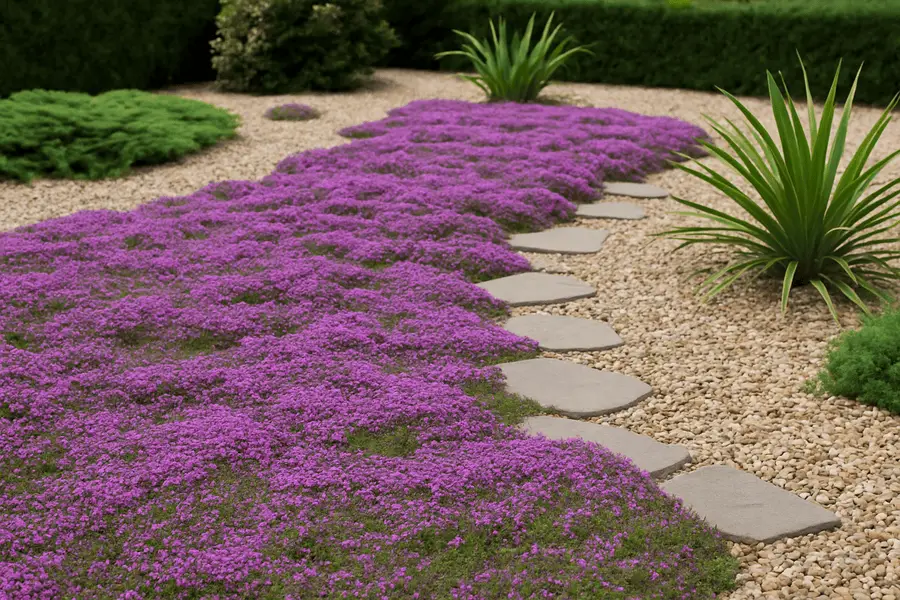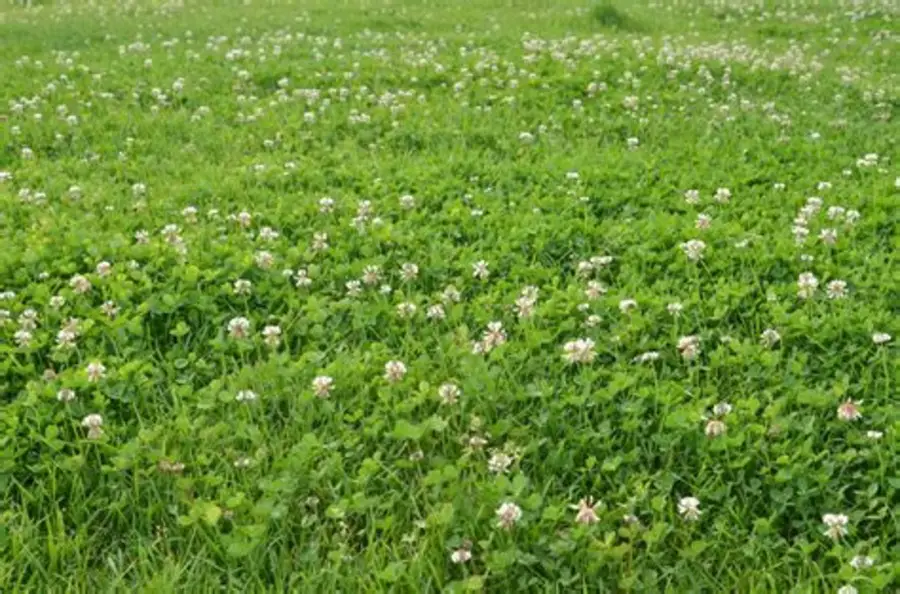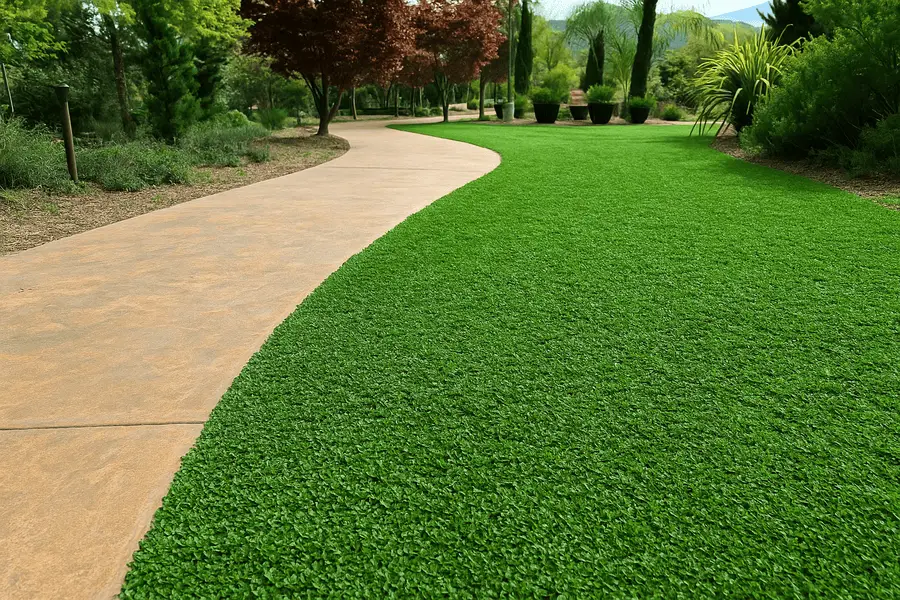
Drought Tolerant Alternatives to Grass are a smart fix when your lawn guzzles water and still looks tired.
It’s frustrating to pour time and money into something that just won’t thrive. The good news?
There are plenty of gorgeous, low-maintenance swaps that stay green without soaking up your savings or your weekend.
Drought Tolerant Alternatives to Grass
Key Takeaways
- Drought Tolerant Alternatives to Grass include walkable groundcovers like creeping thyme, clover, and Kurapia, as well as ornamental grasses and native plants.
- These options use less water, need less mowing, and are perfect for hot, dry climates.
- Some even handle foot traffic or shade better than traditional lawns, making them great for modern yards.
🌾 Drought Tolerant Alternatives to Grass: Top Lawn Hacks

Tired of pouring water, time, and money into a lawn that just won’t thrive? You’re not alone.
Traditional grass might look nice for a moment, but when drought hits, it’s one of the first things to suffer.
The good news? There are smarter, greener options. Drought tolerant alternatives to grass save water.
They also cut down on maintenance and invite more life into your yard.
From walkable groundcovers to pollinator-friendly plants, these lawn hacks will help you create a space that looks great and works with nature, not against it.
🔄 How to Replace Your Lawn
Ready to swap your thirsty turf for something smarter? Here’s a simple step-by-step guide to help you make the switch from traditional grass to a drought-tolerant landscape you’ll love.
✅ 1. Assessment
Start by taking a good look at your lawn. Is it sunny or shady? Flat or sloped? High-traffic or mostly for looks?
This will help you pick the right replacement that fits your space and your needs.
✅ 2. Removal
Out with the old! You’ve got a few eco-friendly ways to say goodbye to grass:
- Sheet mulching: Layer cardboard and compost right over your lawn.
- Solarization: Use clear plastic during hot months to bake the grass.
- Manual removal: Good old-fashioned digging or sod cutters for a faster reset.
✅ 3. Soil Preparation
Healthy soil means happy plants. Test your soil’s pH and nutrient levels, then mix in compost, worm castings, or sand if needed. Loosen compacted soil to help roots settle in more easily.
✅ 4. Selection
Choose plants that match your space and lifestyle. Want something you can walk on? Try creeping thyme. Got shade? Go for moss or sweet woodruff. Need pet-proof? Buffalograss or clover might be your go-to.
✅ 5. Installation
Follow spacing guidelines for each plant, and water thoroughly after planting.
If you’re laying plugs or groundcovers, give them room to spread. Mulch in between to help keep weeds down and moisture in.
✅ 6. Maintenance
Less work doesn’t mean no work. For the first few months:
- Water until roots are established (then dial it back).
- Pull weeds while plants are filling in.
- Trim or mow groundcovers like clover occasionally to keep them tidy.
🚶 Grass Alternatives You Can Walk On

You don’t have to give up that lush, walkable feel just because you ditch the grass.
Some groundcovers are tough enough for foot traffic and still look fantastic.
Whether it’s a backyard path or a full lawn replacement, these options can handle your daily stroll—barefoot-friendly and water-wise.
🌿 Creeping Thyme
- Soft, fragrant, and full of tiny flowers
- Handles moderate foot traffic
- Drought-tolerant once established
- Adds a pop of purple in spring and summer
🌿 Dymondia
- Silver-green leaves with yellow blooms
- Forms a dense mat that stays low
- Ideal for between pavers or large open areas
- Tolerates heat and dry soil
🌿 Creeping Jenny
- Bright green or golden foliage
- Best for light traffic or around stepping stones
- Loves moist soil but adapts to drought once mature
- Adds a flowing, carpet-like look
🌿 Creeping Mazus
- Low-growing with small purple flowers
- Great for moist spots and light shade
- Works well along walkways or borders
- Spreads quickly without being invasive
🌿 Corsican Mint
- Tiny minty leaves with a soft scent
- Works in part shade to full sun
- Low-growing and cushiony underfoot
- Great between flagstones or as a filler plant
🌿 Moss
- Perfect for shady, moist areas
- Doesn’t need mowing or much water
- Creates a serene, natural look
- Best for light foot traffic
🌿 Kurapia
- A tough, evergreen groundcover
- Tolerates foot traffic, drought, and poor soil
- Often used in place of turf in public spaces
- Stays low and needs very little mowing
🐾 Grass Alternatives for Dogs
If you’ve got pups, your lawn takes a beating with digging, running, and the occasional potty break.
Luckily, there are pet-friendly groundcovers that can handle the wear and tear.
These tough alternatives are safer for pets, easier to clean, and more resilient than traditional turf.
🐶 Buffalograss
- Soft, native grass that needs very little water
- Handles moderate traffic and full sun
- Non-toxic and safe for pets
- Grows slowly, so less mowing too
🐶 Clover
- Gentle on paws and super low-maintenance
- Resilient to dog urine and drought
- Naturally enriches the soil with nitrogen
- Bonus: bees love it!
🐶 Artificial Turf
- Always green and super durable
- Easy to hose off and clean
- Great for potty zones or high-traffic paths
- Choose pet-specific turf with drainage layers
🐶 Mulch Areas
- Add bark or wood chips in digging zones
- Helps absorb moisture and softens rough play areas
- Make sure to avoid cocoa mulch (it’s toxic to dogs)
🐶 Tall Fescue
- Tough grass that stands up to heavy use
- Tolerates shade and sun
- Pet-safe and stays green longer than traditional lawns
🌳 Grass Alternatives for Shade
Shady spots can make grass struggle, leaving bare patches and frustration. But not all groundcovers need full sun to shine.
These low-light lawn alternatives are perfect for the cooler, dimmer corners of your yard—and they bring texture, color, and a whole lot less hassle.
🌿 Sweet Woodruff
- Delicate, fragrant groundcover that thrives in full to partial shade
- Produces star-shaped white flowers in spring
- Low-maintenance and spreads nicely without becoming invasive
- Great under trees or along shaded borders
🌿 Moss
- Loves damp, shady areas where grass won’t grow
- No mowing, no fertilizing—just keep it moist
- Creates a soft, lush carpet look
- Ideal for Zen or woodland-style gardens
🌿 Creeping Mazus
- Handles light shade and damp conditions well
- Soft, mat-forming groundcover with small purple flowers
- Works well between stepping stones or as a filler under shrubs
🌿 Ferns and Hostas (Accent Options)
- Not walkable, but perfect to fill space in shaded garden beds
- Add texture and movement with very little care
- Pair well with groundcovers to build layers in shady spots
🏡 Alternatives to Grass in Front Yard
Your front yard sets the tone for your home, and it doesn’t need a high-maintenance lawn to look beautiful.
Whether you’re after curb appeal, color, or a natural feel, these grass-free ideas will save water and turn heads at the same time.
🌼 Rock Gardens
- Use decorative rocks, gravel, and drought-tolerant plants
- Add visual interest with boulders, textures, and shapes
- Virtually no watering or mowing
- Great for modern and low-maintenance landscapes
🌸 Flower Beds and Borders
- Fill with native plants, wildflowers, or pollinator favorites
- Combine perennials with seasonal color for variety
- Add mulch to retain moisture and keep weeds down
- Create layers with tall and short plants for depth
🌾 Ornamental Grasses
- Add movement, texture, and seasonal color
- Low water needs and no mowing required
- Great for edging, accents, or mass planting
- Try Blue Fescue, Feather Reed Grass, or Purple Fountain Grass
🌿 Mulch Pathways
- Define walkways or seating areas without concrete
- Suppresses weeds and holds in moisture
- Use bark, wood chips, or decomposed granite for a natural look
- Blend with plants for a soft transition
🌻 Wildflower Meadows
- Perfect for a natural or cottage-style front yard
- Easy-care and full of seasonal blooms
- Supports bees, butterflies, and local wildlife
- Sow seeds once, and let nature do the rest
🍀 Clover Lawn

Looking for a green lawn without the guilt? Clover might be your new best friend.
It’s soft underfoot, eco-friendly, and easy on the wallet. Whether mixed with grass or planted solo, a clover lawn brings charm and resilience to your yard.
🌱 Why People Love Clover Lawns
- Drought-tolerant: Needs less water than traditional turf
- Low-maintenance: Rarely needs mowing or fertilizing
- Naturally enriches soil: Fixes nitrogen, reducing the need for fertilizer
- Pest-resistant: Repels some insects like ticks and grubs
- Pollinator-friendly: Bees and butterflies love the blooms
🌿 Popular Clover Types
- White Clover: The classic pick—durable and fast-spreading
- Microclover: Smaller leaves, lower growth, blends well with grass
- Strawberry Clover: Has pinkish flowers and a softer, mounding habit
⚠️ Things to Know
- It can stain clothes and go dormant in cold winters
- Doesn’t hold up as well to rough play or heavy traffic
- Needs good drainage to thrive
🚸 High Traffic Lawn Alternatives
Got kids, pets, or a well-worn path across the yard? You need groundcovers that can take a beating and bounce back.
These tough options are built for busy spaces—no puddles, no bald spots, just green that keeps going.
💪 Creeping Thyme
- Tough, low-growing, and handles regular foot traffic
- Smells amazing when stepped on
- Drought-resistant and great between pavers or in open patches
- Bonus: blooms add a splash of color
💪 Kurapia

- One of the strongest lawn alternatives out there
- Stays low, spreads fast, and holds up under heavy use
- Deep roots make it super drought-tolerant
- Used in parks and public spaces for good reason
Phyla nodiflora, commonly known as lippia, kurapia, and frogfruit, is a species of flowering plant in the family Verbenaceae. It can be found in the tropics around the globe. It is often grown as an ornamental plant for ground cover, and is often present in yards or disturbed areas. https://en.wikipedia.org/wiki/Phyla_nodiflora
💪 Artificial Turf
- Always looks freshly mowed
- Built for rough play, pets, and constant use
- Easy to clean, great for play areas or dog runs
- No watering, fertilizing, or mowing—ever
💪 Mulched Play Zones
- Great for dog paths or kid play areas
- Choose soft, non-toxic mulches like bark or shredded wood
- Easy to replace if it gets worn down
- Helps absorb impact and stays cooler than concrete
🌞 Drought Tolerant Lawn Alternatives California
If you’re in California, you know every drop of water counts. With strict watering rules and long dry spells, switching to drought-tolerant lawn options isn’t just smart, it’s essential.
Here are some top picks that love the sun and sip, not gulp, their water.
🌿 UC Verde Buffalograss
- Native to California and bred for low water use
- Soft underfoot and handles moderate traffic
- Stays green most of the year with minimal irrigation
- Grows slowly—less mowing, more relaxing
🌿 Kurapia
- A superstar groundcover for dry, sunny areas
- Needs very little water once established
- Forms a thick, lush mat that crowds out weeds
- Tolerates light foot traffic and blooms tiny white flowers
🌸 Ruschia ‘Nana’
- A hardy succulent groundcover
- Evergreen and drought-hardy with low growth
- Great for slopes or rock gardens
- Can replace turf in areas with low foot traffic
🌾 Deer Grass (Muhlenbergia rigens)
- Native ornamental grass with graceful, arching blades
- Adds movement and texture to your yard
- Works great in borders or as a natural lawn substitute
- Needs almost no water once mature
🌼 California Native Wildflowers
- Create a stunning, ever-changing display
- Supports local bees and butterflies
- Easy to sow and maintain once they take hold
- Ideal for full sun and low-maintenance gardens
🛠️ Low Maintenance Drought Tolerant Alternatives
Want a yard that looks good without becoming your weekend job?
These no-fuss lawn alternatives are perfect for folks who’d rather enjoy their outdoor space than constantly maintain it.
They’re tough, water-wise, and practically take care of themselves.
🌿 Moss
- Loves shady, moist spots
- No mowing, fertilizing, or fuss
- Soft, green, and naturally weed-resistant
- Ideal for quiet corners or Zen-style gardens
🌿 Sedum (Stonecrop)
- A succulent groundcover that thrives on neglect
- Spreads easily and comes in tons of colors
- Handles heat, poor soil, and dry spells
- Perfect for borders, slopes, or rock gardens
🌾 Ornamental Grasses
- No mowing and very little watering once mature
- Adds movement, texture, and year-round beauty
- Try Blue Fescue, Fountain Grass, or Purple Love Grass
- Great as accents or full lawn replacements
🧼 Artificial Turf
- Always looks freshly trimmed
- Zero watering, no fertilizing, and no weeds
- Great for patios, play zones, or dog runs
- Choose eco-friendly brands with drainage and cooling tech
🌰 Mulch and Gravel
- Lowest-maintenance of them all
- Keeps weeds down, holds moisture in
- Use as groundcover or in pathways and borders
- Works well around drought-tolerant plants for a finished look
🌱 Frequently Asked Questions: Drought Tolerant Alternatives to Grass
Thinking about ditching your thirsty lawn? You’re not alone. These FAQs cover everything from low-cost swaps to popular groundcovers and how to get started.
Whether you’re replacing a patch or your whole yard, this section’s here to help you make the switch smoothly.
Q: What is the best alternative to a grass lawn?
A: Some of the best alternatives include creeping thyme, clover, buffalo grass, and native groundcovers.
These plants need less water, less mowing, and still give you that green, lush look—without the upkeep of traditional grass.
Q: What is a drought-tolerant grass alternative?
A: Drought-tolerant grass alternatives include buffalo grass, sheep fescue, and Kurapia.
These are especially popular in dry regions and can thrive with minimal irrigation once established.
Q: What is the cheapest way to replace a lawn?
A: The most budget-friendly options include clover seed, native wildflower mixes, and mulch or gravel.
You can even sheet mulch your existing lawn and plant directly over it to save money on removal.
Q: What can I use instead of grass for my lawn?
A: You can use groundcovers like creeping thyme, moss, or sweet woodruff.
Other great options include artificial turf, mulch, rock gardens, or wildflower meadows depending on your style and climate.
Q: What is a Kurapia lawn alternative?
A: Kurapia is a fast-spreading, low-water groundcover that forms a dense mat like a lawn.
It’s ideal for sunny areas and handles light foot traffic, making it a popular substitute for grass in California and other dry climates.
Q: What is the most drought-resistant lawn?
A: Kurapia and UC Verde buffalo grass are among the top drought-resistant options.
They need far less water than traditional turf and still stay green in dry seasons.
Q: What is best to replace grass with?
A: The best option depends on your goals. For walkable areas, use creeping thyme or clover.
For decorative appeal, try ornamental grasses or wildflowers. For no maintenance, go with mulch or artificial turf.
Q: Is clover a better lawn than grass?
A: Clover needs less water and fertilizer, resists pests, and stays green even in drought.
Plus, it supports pollinators. It’s not ideal for heavy foot traffic, but it’s a great eco-friendly swap for many yards.
Q: What are the downsides of clover lawns?
A: Clover can stain clothes, doesn’t handle rough play as well as grass, and may go dormant in winter in colder climates.
But it’s still a favorite for low-maintenance, water-wise yards.
Q: How do I replace my existing lawn?
A: Start by removing the grass with sheet mulching, sod cutting, or solarization.
Then prepare your soil, choose drought-tolerant plants or groundcover, and plant during the cooler seasons for best results.
Q: How do I remove my lawn and start over?
A: The easiest methods are sheet mulching (layering cardboard and compost) or using a sod cutter to lift the grass.
Avoid chemicals if possible. Once cleared, amend your soil and install your new landscape.
Q: How much does it cost to replace a backyard lawn?
A: Costs vary widely—clover seed or mulch might cost under $1 per square foot, while Kurapia, artificial turf, or a full native garden could range from $3–$15+ per square foot depending on materials and labor.
Ready to make the switch? Whether you’re going all-in with a full front yard makeover or just testing a patch of clover, starting small is totally okay.
Pick one option that fits your space and give it a try—your water bill and your weekends will thank you!
🌎 Conclusion: Embrace Sustainable Landscaping
Swapping out your traditional lawn for a drought-tolerant alternative is one of the smartest choices you can make for your yard, your wallet, and the planet.
You’ll save water, cut back on upkeep, and create a space that actually works with your local climate.
And the best part? You’ve got options. Whether you love the wild look of native flowers, the softness of clover, or the ease of artificial turf, there’s a solution that fits your vibe and your lifestyle.
